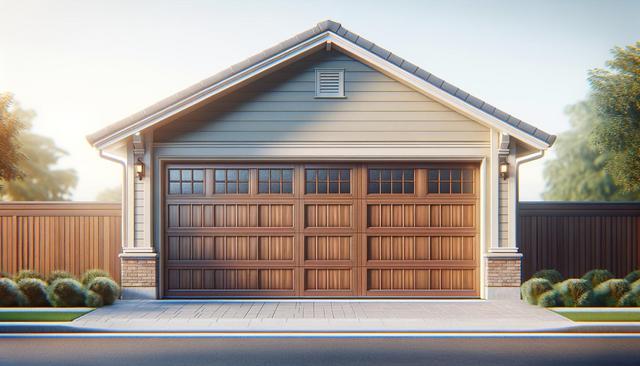Understanding the Different Types of Garage Doors
Garage doors come in a variety of styles, materials, and mechanisms to suit different needs and preferences. The most common types include sectional, roll-up, side-hinged, tilt-up canopy, and tilt-up retractable doors. Sectional doors are perhaps the most popular due to their space-saving design and ease of operation. Roll-up doors are often used in commercial settings but can also be a practical choice for residential garages with limited ceiling space.
Materials play a crucial role in the functionality and aesthetic of a garage door. Popular materials include:
- Steel – Durable and low-maintenance, ideal for security.
- Wood – Offers a traditional look but requires regular maintenance.
- Aluminum – Lightweight and resistant to rust, suitable for humid climates.
- Fiberglass – Resistant to denting and cracking, but can fade over time.
Each type and material has its pros and cons, so it’s important to consider your specific needs such as climate, usage frequency, and design preferences when selecting a garage door.
Key Features to Look For
When selecting a garage door, functionality and safety should be top priorities. Modern garage doors often come with a range of features that enhance usability and security. One essential feature is the automatic opener, which provides convenience and added safety, especially when paired with rolling code technology to prevent unauthorized access.
Insulation is another important factor, especially if your garage is attached to your home. Well-insulated doors can improve energy efficiency by maintaining interior temperature and reducing noise. Look for the R-value of the door—the higher, the better the insulation. Other features to consider include:
- Safety sensors to detect objects in the path of the door.
- Battery backup for operation during power outages.
- Smart technology integration for remote access and monitoring.
- Weather sealing to protect against wind, rain, and pests.
These features not only improve the functionality of your garage door but also contribute to the overall security and comfort of your home.
Garage Door Installation: What to Expect
Installing a garage door is a substantial home improvement project that requires careful planning and professional execution. The process typically begins with an assessment of your garage space, door measurements, and selection of materials. It’s advisable to work with licensed professionals who can ensure the job is done safely and correctly.
Installation usually involves several key steps:
- Removing the old garage door and hardware.
- Setting the track and spring system.
- Mounting panels or sections of the new door.
- Installing the opener and safety mechanisms.
- Testing and fine-tuning for smooth operation.
While some homeowners may attempt DIY installations, it’s important to recognize the risks involved, especially with tension-loaded springs. Improper installation can lead to operational issues or even injury. A professional installer will also often provide a warranty, offering peace of mind for years to come.
Regular Maintenance for Longevity
Proper maintenance can significantly extend the life of your garage door and reduce the likelihood of costly repairs. Regular inspections should be conducted to check for signs of wear and tear on components such as springs, cables, rollers, and tracks. Lubricating moving parts every few months can help prevent friction-related damage and ensure smooth operation.
Some basic garage door maintenance tips include:
- Cleaning the door surface to prevent buildup of debris and rust.
- Tightening bolts and hardware that may loosen over time.
- Testing the balance of the door to ensure it opens evenly.
- Checking the auto-reverse feature for safety compliance.
In addition to self-maintenance, annual professional inspections are highly recommended. Technicians can identify and address issues that may not be visible to the untrained eye, helping you avoid potential breakdowns and ensuring continued safe use of your garage door.
Improving Curb Appeal with Garage Door Design
Garage doors are a prominent feature of many homes, often occupying a significant portion of the front facade. A stylish, well-maintained garage door can enhance the overall appearance of your property. There are numerous design options available, ranging from minimalist modern styles to more traditional carriage-house aesthetics.
Customization options may include:
- Window inserts for added natural light and visual interest.
- Decorative hardware such as handles and hinges.
- Color choices that complement your home’s exterior.
- Textured finishes that mimic wood grain or stone.
When choosing a design, consider the architectural style of your home and the visual statement you want to make. A thoughtfully selected garage door can tie together your home’s exterior elements and even boost its resale value.




Leave a Reply